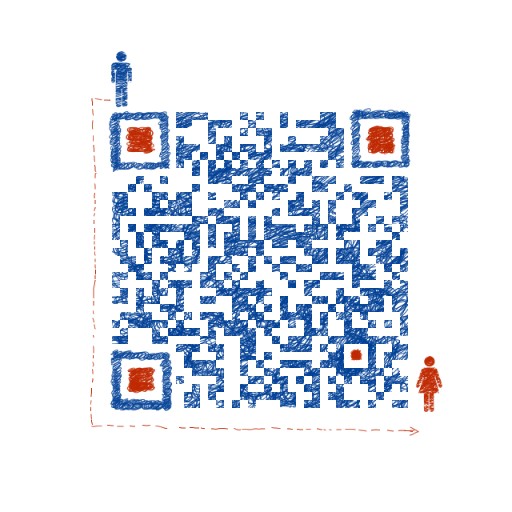Fourteenth Century – Seventeenth Century 十四世纪-十七世纪 J.K. Rowling
Originally published on
on Mar 8th 2016
十四世纪-十七世纪
J.K.罗琳
原载于
2016年3月8日
Though European explorers called it ‘the New World’ when they first reached the continent, wizards had known about America long before Muggles (Note: while every nationality has its own term for ‘Muggle’, the American community uses the slang term No-Maj, short for ‘No Magic’). Various modes of magical travel – brooms and Apparition among them – not to mention visions and premonitions, meant that even far-flung wizarding communities were in contact with each other from the Middle Ages onwards.
The Native American magical community and those of Europe and Africa had known about each other long before the immigration of European No-Majs in the seventeenth century. They were already aware of the many similarities between their communities. Certain families were clearly ‘magical’, and magic also appeared unexpectedly in families where hitherto there had been no known witch or wizard. The overall ratio of wizards to non-wizards seemed consistent across populations, as did the attitudes of No-Majs, wherever they were born. In the Native American community, some witches and wizards were accepted and even lauded within their tribes, gaining reputations for healing as medicine men, or outstanding hunters.
虽然欧洲探险家刚到美洲大陆时称它为“新大陆”,但巫师们早在麻瓜之前就已经知道美洲了(注:虽然每个国家都有自己的“麻瓜”一词,但美国社会用的是俚语麻鸡,是‘没有魔法’的缩写)。魔法旅行的各种方式——扫帚和幻影移形——更不用说幻象和预感了,这意味着从中世纪开始,即使是遥远的巫师群体也能相互联系。
早在17世纪欧洲的麻鸡移民到来之前,美洲原住民魔法界和欧洲及非洲魔法界就已经相互了解。他们已经意识到他们社区之间的许多相似之处。某些家庭显然是“魔法”的,魔法也意外地出现在迄今为止还没有已知的巫师或女巫的家庭中。巫师和非巫师的总体比例在不同人群中似乎是一致的,就像麻鸡的态度一样,无论他们出生在哪里。在美洲原住民社区,一些巫师和女巫被接受,甚至在他们的部落赞美,获得声誉,愈合作为药师,或杰出的猎人。
However, others were stigmatised for their beliefs, often on the basis that they were possessed by malevolent spirits.
The legend of the Native American ‘skin walker’ – an evil witch or wizard that can transform into an animal at will – has its basis in fact. A legend grew up around the Native American Animagi, that they had sacrificed close family members to gain their powers of transformation. In fact, the majority of Animagi assumed animal forms to escape persecution or to hunt for the tribe. Such derogatory rumours often originated with No-Maj medicine men, who were sometimes faking magical powers themselves, and fearful of exposure.
然而,其他人则因为他们的信仰而蒙受耻辱,通常是因为他们被恶毒的灵魂附身。
印第安人“皮肤行者”的传说——一个邪恶的女巫或巫师,可以随意变成动物——有其事实根据。一个关于美国土著阿尼马吉的传说,他们牺牲了亲密的家庭成员来获得转化的力量。事实上,大多数阿尼马吉人都以动物的形式来逃避迫害或为部落狩猎。这种贬损的谣言通常起源于麻鸡巫医,他们有时自己也会假装拥有魔力,害怕暴露。
The Native American wizarding community was particularly gifted in animal and plant magic, its potions in particular being of a sophistication beyond much that was known in Europe. The most glaring difference between magic practised by Native Americans and the wizards of Europe was the absence of a wand.
美洲原住民巫师群体在动物和植物魔法方面特别有天赋,尤其是其药剂的复杂程度超过了欧洲已知的。美洲原住民和欧洲巫师之间最明显的区别就是没有魔杖。
The magic wand originated in Europe. Wands channel magic so as to make its effects both more precise and more powerful, although it is generally held to be a mark of the very greatest witches and wizards that they have also been able to produce wandless magic of a very high quality. As the Native American Animagi and potion-makers demonstrated, wandless magic can attain great complexity, but Charms and Transfiguration are very difficult without one.
魔杖起源于欧洲。魔杖引导魔法,使其效果更精确更强大虽然它通常被认为是一个非常伟大的女巫和男巫的标志,但他们也能够产生非常高质量的无头魔法。正如美洲土著阿尼马吉和药剂师所证明的那样,没有魔杖的魔法可以达到很高的复杂性,但是没有魔法和变形术是非常困难的。

预言家日报社社长微信号,欢迎大家扫码加上,微信号:1915207080
全部评论